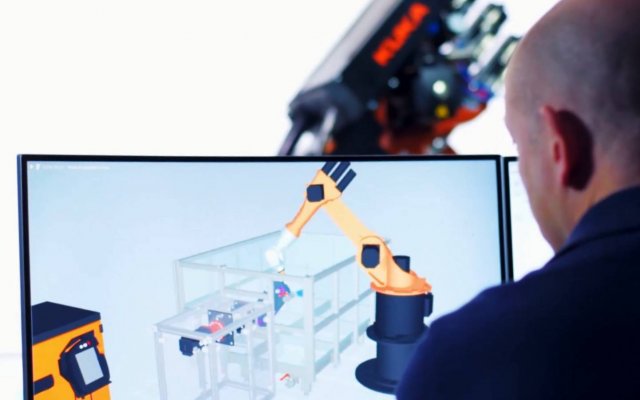Dec 2018
Top 6 Future Trends in Robotic Automation

A thought-provoking Robotics Online Blog from the Robotic Industries Association spotted by the team at Transform NDT makes for an interesting and reassuring read about future trends in robotic automation. The 6 trends identified map well with our views on the role of NDT in automation.
The blog concludes by saying "robotic automation has been a revolutionary technology in the manufacturing sector, but it’s still poised to transform the industry over the next couple of years. The six trends will be some of the most impactful advances in robotic automation in the future" and here at Transform NDT we couldn't agree more!
The ability to seamlessly integrate a wide range of sensor types with robots is at the core of our system integration model. This approach combined with embedded sensing technology will deliver the means to provide the large amounts of real-time data flow that will define future manufacturing and processing requirements.
We are excited by the concept of open automation architectures and we also believe in this approach for the integration of NDT with robotics to give both customers and our own development engineers the freedom to "mix and match" different sensor technologies.
At Transform NDT we are already embracing virtual solutions through our innovative use of offline programming to design, evaluate and validate our NDT inspections and produce optimised robot path planning. Extending this to collaborative robots is an exciting development on the NDT horizon allowing human expertise and the subtleties of complex inspections to be married with the precision and consistency of robotic part and tool positioning.
The top 6 Future Trends in Robotic Automation reported by the blog are:
-
Adoption of Industrial Internet of Things (IIoT) Technology
Robots will increasingly deploy smart sensors at the edge of production to collect data previously inaccessible to manufacturers. This trend is currently underway and will lead to new levels of productivity and efficiency. -
Industrial Cybersecurity as a Priority
As robots become more connected to internal systems for data collection, the cybersecurity risks increase. Manufacturers will be forced to address vulnerabilities in their processes and invest heavily in cybersecurity to ensure safe, reliable production. -
Big Data Analysis Becomes a Competitive Differentiator
Robots will become a key source of information on the factory floor. The collection of data, however, is just one piece of the puzzle. Manufacturers will have to implement systems to organize and analyse all of this information in order to act on it. -
Open Automation Architectures Will Be Implemented
As robotic automation gains widespread adoption, the need for open automation architectures grows. Large industry players will work with industry organizations to produce standards and open documentation that make robotic integration easier while improving product compatibility. -
Virtual Solutions Will Invade Physical Processes
Virtual solutions will become an integral part of industrial robotics. One current growing application is the virtual representation of robotic systems for proof of concept and offline programming. -
Collaborative Robots Will Continue to Grow in Popularity
Collaborative robots can work safely alongside humans and are often far cheaper than their industrial counterparts. As collaborative robots become more capable in tough industrial settings, they will see greater adoption by manufacturers with strict ROI requirements.


